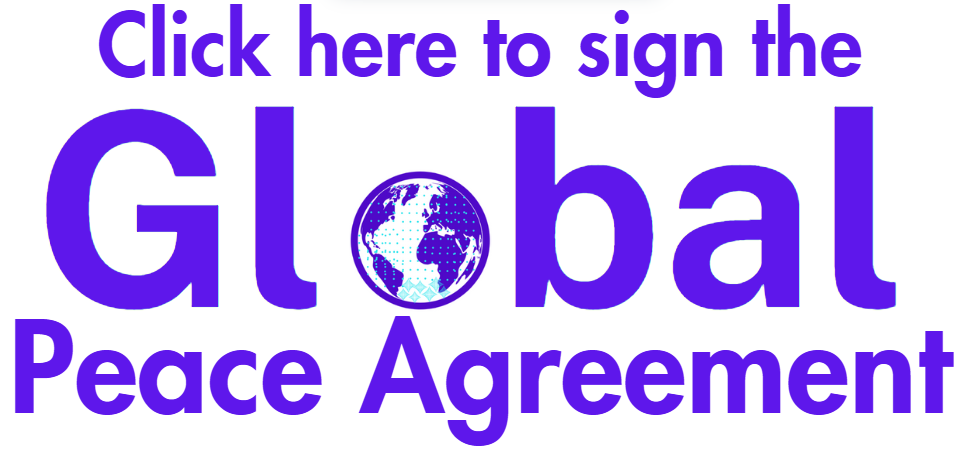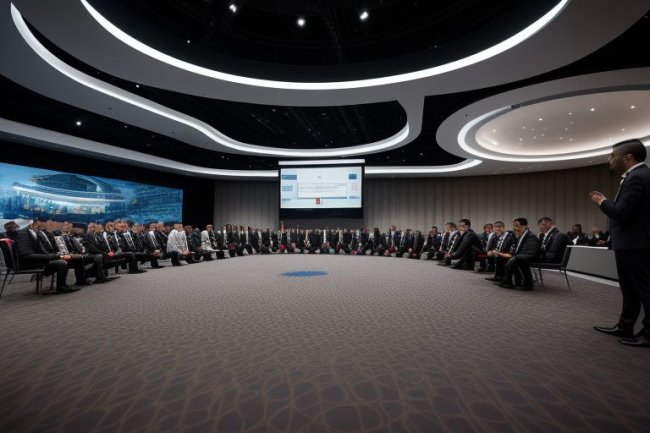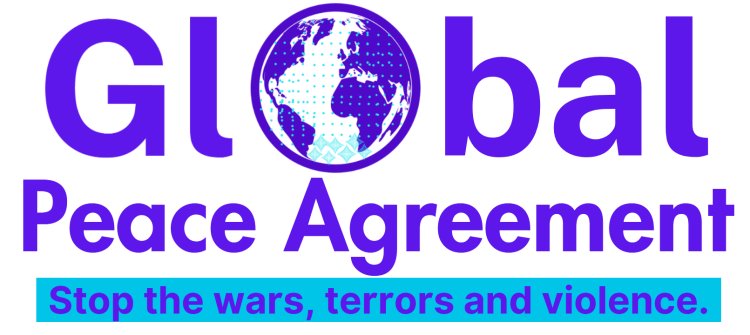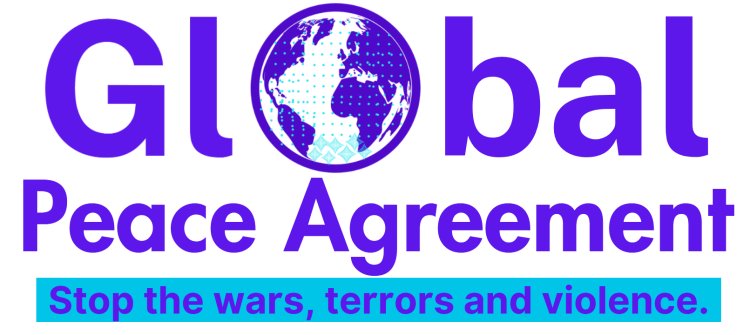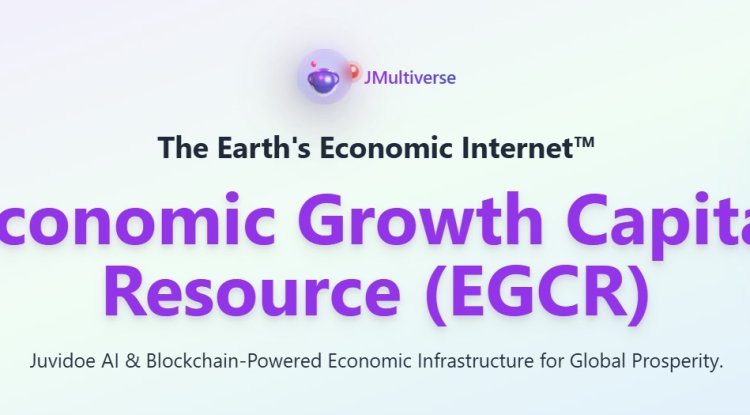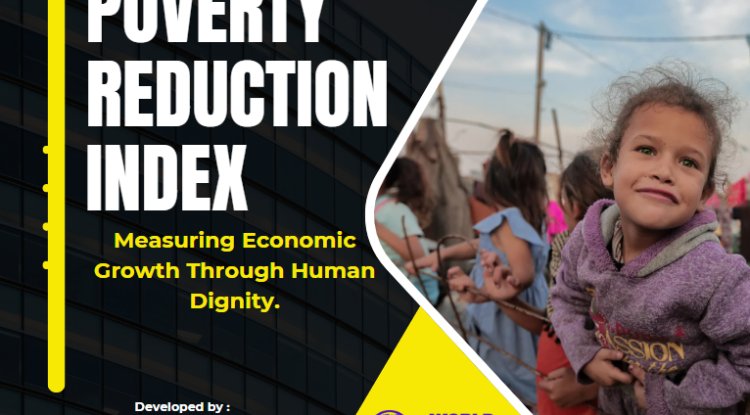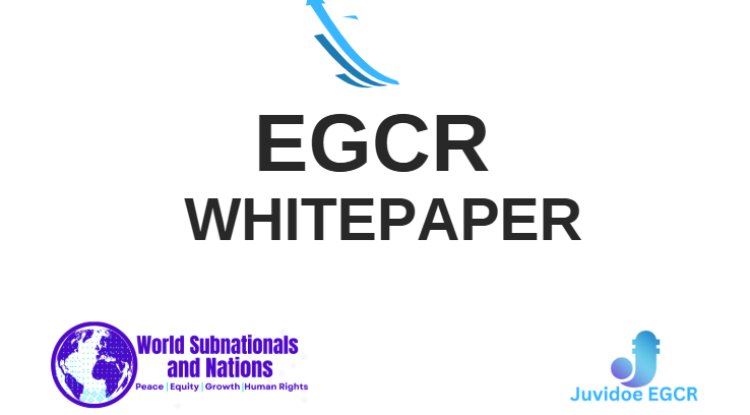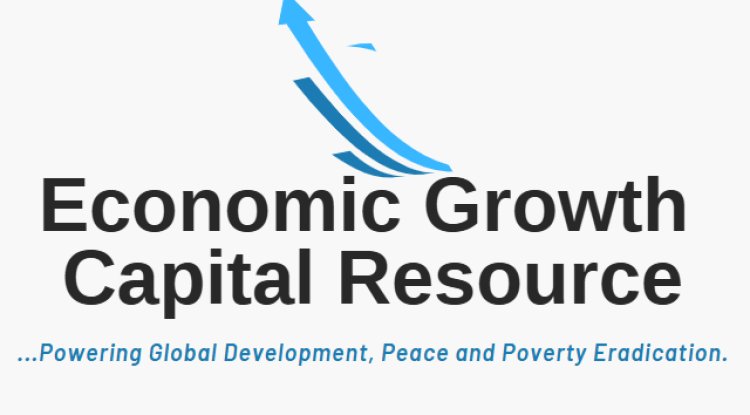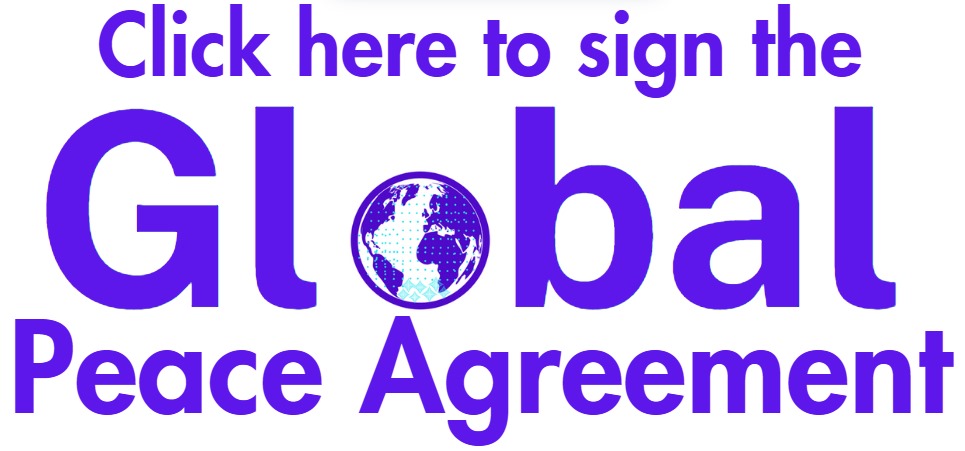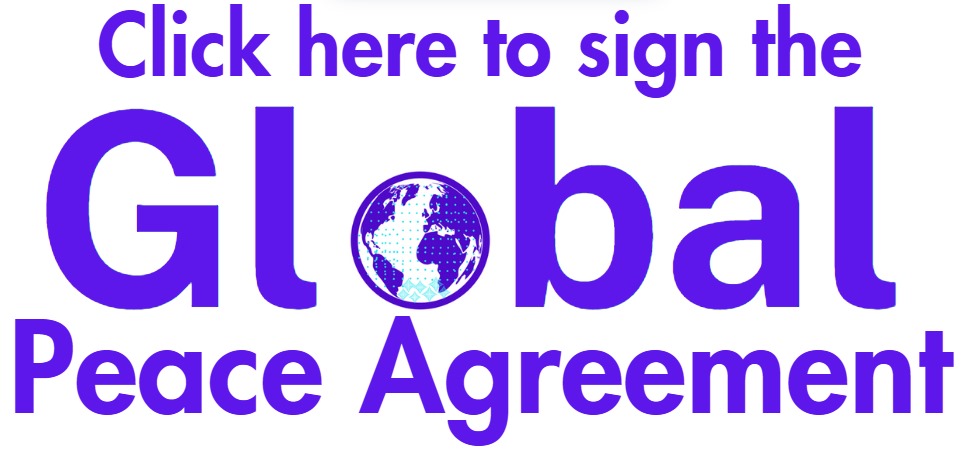CULTURAL EXCHANGE AND MUTUAL UNDERSTANDING
Cultural Exchange and Mutual Understanding emerge as potent catalysts for fostering equality among nations in a world distinguished by diversity, where cultures mix and countries intersect in the international arena. At its core, this concept symbolizes the tremendous importance of building relationships, crossing boundaries, and embracing the rich tapestry of human heritage. It represents an effort beyond diplomatic negotiations and economic links, reaching into the heart of what brings us all together as a global community.
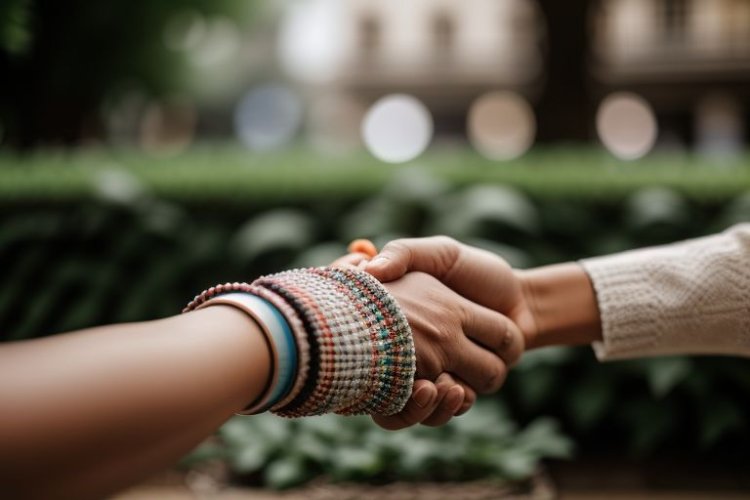
Cultural exchange is a dynamic process that enables societies to share their traditions, values, and ways of life; it goes beyond simple surface-level connections. It is the sharing of ideas through language, music, cuisine, and customs as a means of communication across ideological and geographical boundaries. Nations can explore uncharted territory and appreciate various points of view by participating in cultural exchanges.
In this interwoven narrative, the concept of mutual understanding takes center stage. It culminates with active listening, empathetic engagement, and an earnest desire to comprehend one another. By immersing in each other's cultures and narratives, nations can forge a profound connection that transcends the surface and delves into the core of shared humanity. Mutual understanding shatters stereotypes, dispels biases, and lays the groundwork for respect and equality among nations.
Cultural exchange and mutual understanding work in tandem to foster equality among nations by dismantling the barriers that division often erects. They offer a space where appreciation and curiosity flourish, fostering an environment where nations are willing to learn from one another and stand in solidarity. In this narrative, equality isn't just about political negotiations; it's about recognizing the inherent worth of each nation's cultural legacy and affording them respect and consideration.
As we traverse the global landscape, navigating through cultural nuances and intricacies, the journey of cultural exchange and mutual understanding emerges as a pivotal thread in international relations. It embodies the belief that embracing diversity doesn't weaken a nation but strengthens the bonds that connect us all. Through this exchange, nations can build bridges of empathy and cooperation that serve as the foundation for a world where equality prevails, irrespective of size, influence, or economic status.
Embracing Diversity and Fostering Mutual Understanding
Diversity, a hallmark ingrained in the very fabric of our existence, paints a portrait of unparalleled potential. As humanity's narrative unfolds, the coexistence of multifarious cultures, languages, traditions, and histories paints the vibrant tapestry of our shared global landscape. Amid this kaleidoscope of diversity, a challenge beckons: the art of harmonizing the divergent threads that shape us. Within this challenge lies the transformative power of fostering mutual understanding—a cornerstone that, when laid, fortifies the foundation of equality among nations. In this intricate dance of perspectives, the symphony of mutual understanding emerges as a unifying force, threading connections between disparate fragments and weaving the promise of an egalitarian world.
Diversity is abundant wherever you look, from the humming markets of Marrakech, where vivid fabrics communicate tales of years past, to the serene temples of Kyoto, where respectful murmurs reverberate in the recesses of centuries-old buildings. It's embodied in the rhythmic beats of African drums, a heartbeat that resonates across continents, and in the mellifluous strains of European classical compositions that echo the aspirations of generations. It's not confined to the grandeur of landmarks; diversity pulses in the daily interactions, traditions, and conversations that illuminate the lives of people around the globe.
Diversity is an eternal dialogue, a dance where cultures converse, exchange, and intertwine. It's an ever-evolving narrative that finds expression in the flavors of local cuisines, the brushstrokes of indigenous art, and the cadence of native languages. The essence of diversity lies not only in its outward manifestations but also in its power to foster innovation, resilience, and empathy.
When diverse perspectives converge, they birth new ways of thinking, enabling societies to tackle complex challenges from myriad angles. The tapestry of diversity is woven with threads of human resilience, a testament to our ability to adapt, learn, and thrive in a world of change. It's a reminder that every voice matters, every story is significant, and every heritage is a treasure trove of wisdom.
In celebrating diversity, we affirm our commitment to embracing the richness of human identity. We acknowledge that the symphony of cultures contributes to the symposium of humanity—a collective endeavor that resonates far beyond individual borders. From the ancient traditions of indigenous communities to the innovative technologies of modern cities, diversity enkindles progress, reminding us that our shared destiny is intertwined in a global narrative that transcends time and space.
As we navigate the tapestry of diversity, let us not merely coexist but consciously strive to comprehend, appreciate, and celebrate one another's narratives. By doing so, we embrace our shared humanity, acknowledging that within our myriad differences lies a unifying thread of aspirations, dreams, and a collective longing for a world that cherishes and harmonizes the unique notes of every individual's story.
The Bridge of Mutual Understanding
Mutual understanding arises as a transcendent bridge that crosses the chasms of miscommunication and fosters the development of true connections in the great expanse of a diverse world. The guiding light leads us through the complex maze of cultural inconsistencies, language quirks, and contrasting worldviews. The powerful elixir that pushes us past the boundaries of our prejudices and encourages us to embrace the rich tapestry of human experiences that cover our world is mutual understanding.
At its core, mutual understanding represents the profound act of delving into the narratives of others, seeking not only comprehension but also empathy. It entails the deliberate effort to step outside the boundaries of our perspectives, to wander through the landscapes of alternative viewpoints, and to immerse ourselves in the lives of those whose stories diverge from our own. It's a process that requires unraveling preconceived notions and recognizing the legitimacy of other perspectives.
The true potency of mutual understanding lies in its capacity to dismantle the walls erected by misconception and prejudice. It is the force that transforms strangers into allies, fostering a profound sense of kinship and camaraderie. As we embark on this journey of comprehension, we begin to perceive the world through the eyes of others—acknowledging their joys, understanding their struggles, and embracing their aspirations.
Mutual understanding is a balm for a world grappling with division and strife. It is a salve that nurtures the wounds inflicted by misunderstanding and animosity. This bridge's power is revealed when individuals from disparate backgrounds find common ground, bridging the gaps that once seemed insurmountable. It transcends linguistic, cultural, and ideological boundaries, offering a universal language of empathy that resonates across the spectrum of human experience.
On the grand stage of international relations, mutual understanding is the master key that opens doors to cooperation, diplomacy, and the pursuit of global harmony. It's the conduit through which world leaders can engage in meaningful discourse, seeking shared solutions to complex challenges that transcend borders. By truly comprehending the perspectives of other nations, leaders can navigate the intricate diplomatic landscape with wisdom and sensitivity.
Imagine a world where mutual understanding prevails—conflicts are averted, and collaborations flourish. In this realm, diplomacy is marked by the genuine desire to comprehend the needs and aspirations of other nations. It's a space where the seeds of peace are sown, germinating into fruitful relationships that yield shared prosperity and progress.
In the journey towards global harmony, mutual understanding is the compass that guides us through uncharted waters. It's a testament to the resilience of the human spirit, reminding us that our stories, though diverse, are woven with threads of shared emotions, desires, and dreams. As we cross this bridge, we recognize that while our paths may differ, they intersect in the realm of our collective humanity.
The bridge of mutual understanding manifests our innate capacity for empathy and connection. It's a testament to our shared yearning for unity and cohesion in a world of diversity. As we traverse this bridge, we embark on a journey of discovery that leads us to the heart of the human experience, where bonds are forged, horizons are expanded, and the symphony of global harmony finds its resonance.
The Role of World Leaders in Embracing Diversity
World leaders, occupying pivotal positions of influence and authority, are responsible for shaping the global narrative of diversity and mutual understanding. Herein lies the potential to lay the groundwork for equality among nations, regardless of their size, influence, or economic status. But how can world leaders embrace diversity to foster mutual understanding and, in turn, promote equality among nations?
1. Educational Reforms: Education is the cornerstone of transformation. World leaders can introduce comprehensive curricula that educate their citizens about other nations' cultures, histories, and perspectives. By fostering cultural literacy early on, societies can cultivate empathy and curiosity about the world beyond their borders.
2. Cultural Exchange Programs: Initiating and supporting cultural exchange programs can be instrumental in breaking down barriers. World leaders can promote cross-cultural understanding and dispel stereotypes by facilitating opportunities for citizens to experience other cultures firsthand.
3. Promotion of Inclusivity: Embracing diversity requires creating an inclusive environment that celebrates differences. World leaders can enact policies that protect minority rights, ensure representation, and counter discrimination, fostering respect for all cultures and nations.
4. International Collaboration: World leaders can actively engage in international collaborations encouraging dialogue, cooperation, and problem-solving. Joint efforts on climate change, poverty eradication, and healthcare can foster a sense of shared purpose and understanding.
5. Media and Communication: The media plays a pivotal role in shaping public opinion. World leaders can promote responsible and balanced media coverage that highlights the positive aspects of diverse cultures, counteracting the spread of stereotypes and biases.
6. Cultural Diplomacy: Utilizing cultural diplomacy, world leaders can leverage art, music, literature, and other cultural forms to foster connections between nations. Cultural events, exhibitions, and exchanges can serve as dialogue and mutual understanding platforms.
7. Leadership by Example: World leaders can set an example by championing diversity within their administrations and societies. Appointing individuals from diverse backgrounds to leadership positions sends a powerful message about the value of inclusion.
8. Global Policy Frameworks: International agreements and policies that prioritize diversity and mutual understanding can have far-reaching effects. World leaders can collaborate to develop frameworks that promote cultural exchange, protect indigenous rights, and uphold cultural heritage.
9. Humanitarian Initiatives: Engaging in humanitarian efforts that transcend national boundaries can unite nations in shared compassion and empathy. Responding to global crises and offering assistance to those in need reinforces the interconnectedness of our world.
10. Public Awareness Campaigns: World leaders can launch campaigns emphasizing the benefits of diversity and mutual understanding. Such campaigns can inspire citizens to seek cross-cultural engagement and exchange opportunities actively.
Equality of Nations: A Consequence of Mutual Understanding
Mutual understanding, often regarded as a means to an end, is a profound transformation in itself—a transformation that blooms into the radiant flower of equality among nations. As the tapestry of global relations intricately interweaves, mutual understanding is the catalyst that unravels hierarchical paradigms, ushering nations into a realm where equality flourishes.
In this realm, mutual understanding becomes more than a bridge—it is the foundation upon which the edifice of equality is constructed. A seismic shift occurs as world leaders recognize the value of embracing diverse perspectives and fostering empathy. The conventional notions of power dynamics and supremacy that often underscore international interactions crumble beneath the weight of understanding.
The heart of this transformation lies in dismantling the illusion that the significance of a nation is proportionate to its size or influence. Mutual understanding proclaims that every nation, irrespective of its physical dimensions, possesses a unique thread that contributes to the grand tapestry of humanity. The rich heritage of a small nation is just as precious as the cultural legacy of a larger one. This revelation challenges the preconceived notions of superiority and inferiority that have long clouded diplomatic engagements.
As mutual understanding thrives, respect blossoms in its wake. Steeped in the wisdom of empathetic comprehension, world leaders grasp that no perspective is inconsequential. No culture is less worthy, and no voice deserves to be silenced. This realization reverberates in the corridors of global politics, transcending linguistic barriers and ideological differences.
The metamorphosis engendered by mutual understanding culminates in tangible policies prioritizing all nations' rights and sovereignty. The small and the mighty, the wealthy and the struggling—all are afforded equal consideration. Equality is no longer a distant aspiration but a living, breathing reality nurtured by a collective commitment to dialogue, cooperation, and the pursuit of global welfare.
Imagine a world where the principles of equality flourish, where nations stand united on a level playing field. Here, equality extends beyond the mere proclamation of ideals—it's a vibrant pulse that underpins the actions of world leaders. Once marred by power imbalances, diplomacy is revitalized by genuine understanding and respect.
In this world, solutions are sought through collaboration rather than coercion. Dialogue supersedes dominance, and consensus replaces confrontation. The pressing global challenges—climate change, poverty, or conflict—become shared endeavors where nations contribute based on their strengths, not their size.
The symphony of equality echoes through every international engagement, harmonizing the diverse voices of nations into a chorus of unity. And as the world watches, mutual understanding continues to blossom, intertwining with the roots of equality and nurturing a future where every nation's sovereignty, human rights, and freedom are not just revered concepts but inviolable truths.
The evolution from mutual understanding to equality is a transformative journey. It's a journey that dismantles hierarchies, amplifies respect, and redefines the dynamics of international relations. As world leaders embrace this journey, they embrace a world where nations, no matter how big or small, stand as equals—bound by empathy, united by dialogue, and guided by the luminous path of mutual understanding.
Diversity is important in human pursuits, and respect for one another orchestrates harmony. World leaders are uniquely positioned to guide their nations toward a period when global equality is a reality rather than an ideal since they are in a position of power. By embracing diversity, promoting understanding, and upholding the rights of every nation, international leaders may leave a legacy that cuts across borders and pave the way for a world unified by shared values and empathy.

